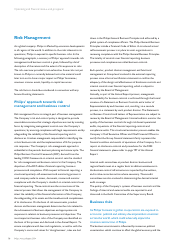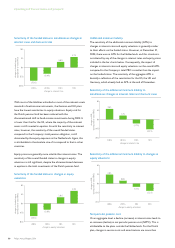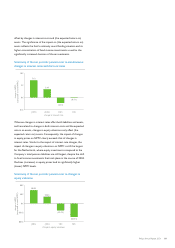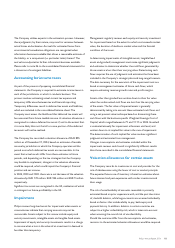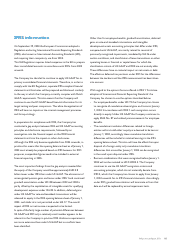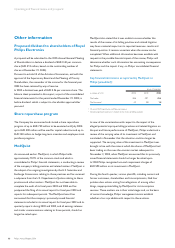Philips 2004 Annual Report Download - page 86
Download and view the complete annual report
Please find page 86 of the 2004 Philips annual report below. You can navigate through the pages in the report by either clicking on the pages listed below, or by using the keyword search tool below to find specific information within the annual report.IFRS information
On September 29, 2003 the European Commission adopted a
Regulation endorsing International Financial Reporting Standards
(IFRS), also known as International Accounting Standards (IAS),
and requiring their compulsory use from 2005.
This IAS Regulation requires listed companies in the EU to prepare
their consolidated accounts in accordance with IFRSs from 2005
onwards.
The Company has decided to continue to apply US GAAP for its
primary consolidated financial statements. Therefore, in order to
comply with the EU Regulation, separate IFRS-compliant financial
statements and footnotes will be prepared and disclosed, similarly
to the way in which the Company currently complies with Dutch
GAAP requirements. This also means that the Company will
continue to use the US GAAP-based financial information for its
target setting and peer comparison. Therefore the application of
IFRS will have no impact on the internal management processes
and Group strategy.
In preparation for compliance with IFRS, the Company has
conducted a gap analysis between IFRS and US GAAP accounting
principles and disclosure requirements, followed by an
investigation into the financial impact on the IFRS financial
statements and into the impact on other disclosures.
Although the IFRS only become applicable from 2005 onwards, in
practice this means that the opening balance sheet as of January 1,
2004 must already be prepared based on IFRS because, for IFRS
purposes, comparable figures need to be included in external
financial reporting in 2005.
The most important findings from the gap analysis revealed that
the equity of the Company would be approximately EUR 0.8
billion lower under IFRS than under US GAAP. The elimination of
unrecognized pension gains and losses under IFRS 1 and continued
goodwill amortization under IAS 38 between 2002 and 2004 is
partly offset by the capitalization of intangible assets for qualifying
development expenses under IAS 38. In addition, deferred gains
under US GAAP for sale-and-leaseback transactions will be
released to equity in the IFRS opening balance sheet of January 1,
2004; such deferral is not permitted under IAS 17. The overall
impact of IFRS on net income is expected to be limited.
In spite of the fairly large number of potential differences between
US GAAP and IFRS only a relatively small number appears to be
relevant to the Company in practice. IFRS disclosure requirements
are more extensive than under US GAAP but no conflicts have
been identified.
Other than for employee benefits, goodwill amortization, deferred
gains on sale-and-leaseback transactions and intangible
development assets, accounting principles that differ under IFRS,
compared with US GAAP, are mainly related to reversal of
previously recognized impairments, mandated by IAS 36 under
certain conditions, and classification of lease transactions as either
operating leases or financial or capital leases for which the
classification criteria of US GAAP and IFRS are not entirely alike.
These differences have no material impact on net assets or debt.
The effect on deferred tax positions under IFRS for the differences
between the tax basis and the IFRS measurement has been taken
into account.
With regard to the options that are offered in IFRS 1 ‘First-time
adoption of International Financial Reporting Standards’ the
Company has chosen to use the options described below.
- For employee benefits under IAS 19 the Company has chosen
to recognize all cumulative actuarial gains and losses at January
1, 2004. In accordance with IFRS 1 such recognition occurs
directly in equity. Under US GAAP the Company continues to
apply SFAS No. 87 and related pronouncements for employee
benefits.
- The cumulative translation differences related to foreign
entities within stockholder’s equity are deemed to be zero at
January 1, 2004, accordingly these cumulative translation
differences will be included in retained earnings in the IFRS
opening balance sheet. This also will have the effect that upon
disposal of a foreign entity only cumulative translation
differences that arose after January 1, 2004 can be recognized
in the result upon disposal under IFRS.
- Business combinations that were recognized before January 1,
2004 will not be restated to IAS 22/IFRS 3. The Company
continues to use the US GAAP recognition criteria and
accounting principles, which do not materially deviate from
IFRS 3, which the Company has chosen to apply from January
1, 2004 onwards for its IFRS financial statements. Accordingly,
under IFRS, goodwill amortization will terminate as from that
date and will be replaced by annual impairment tests.
85Philips Annual Report 2004



